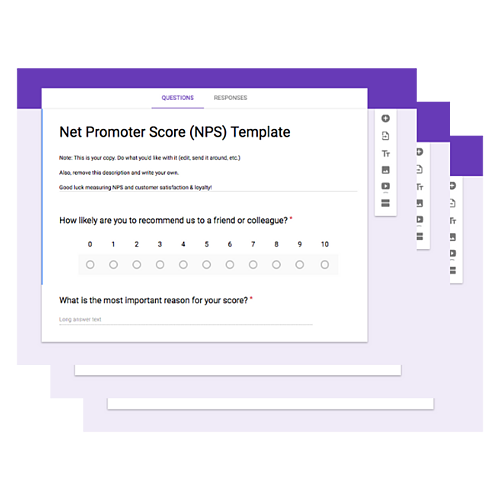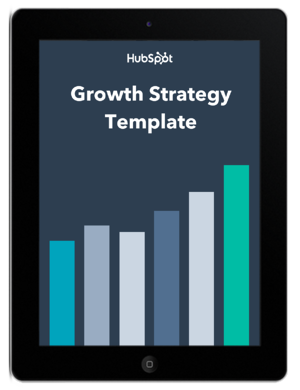Your business is getting by just fine – but still, the questions remain: Could you be selling more? Is there an opportunity to increase market share? Is there any way you could further your product diversification efforts?
Companies hoping to increase revenue can do so in a variety of ways — such as increasing their advertising budget, expanding their sales teams, and investing heavily in product development.
However, one of the often overlooked ways to strengthen your gross sales is a purposeful, well-researched, and expertly executed market development strategy.
In this article, we’ll explain what market development is and how you can employ it to increase sales and grow your business. Then, we’ll take a look at some examples of market development strategies that work for top businesses today.
Each category rests upon two axes — one for market and one for risk. A company can expand its efforts into new or existing markets and each poses more or less risk to the business.
Market Penetration
When businesses want to expand within their existing markets with low risk, they might attempt a market penetration strategy. In this scenario, TAM increases because by offering a new product or service, a business can effectively increase the maximum amount of revenue it can possibly attain from its existing customer base. A product launch is an effective way to execute this strategy.
- Product Launches — A company may release new iterations of a product they already sell successfully within the market. The purpose of launching a new product is to generate excitement and buzz around the brand to increase sales.
Product Development
A more high-risk way to expand within an existing market is through product development, but make no mistake — this market development strategy can be rewarding. Developing new products is a delicate process. Businesses should be keenly aware of their market as market interest is a driving factor for product development. If the audience isn’t receptive due to a lack of education around the product, a poor marketing campaign to promote the product, or even poor timing of launching the product, this strategy can be difficult to execute. However, companies that have failed at developing new products usually have in-depth learnings to apply to their next market development strategy. Product development comes in many forms, here are a few:
- Rebranding — If a business has been around for a long time or has been in hot water recently, it’s possible that the market has become disconnected from the brand. This can happen due to a lack of advertising around the brand itself, outdated positioning of a product when compared to the competition, or distrust within the market. Companies can rebrand themselves to reconnect with their existing market while positioning themselves as a viable option among the competition. Adjusting the packaging of a product, offering a new size, flavor, or color, or even changing the name of the product or brand can help a company rebrand a product to have a better position within its existing market.
- Repricing — Another way to gain traction within an existing market is for a business to make its products more accessible or desirable to that market through its pricing. Repricing doesn’t necessarily mean lowering prices, although that is one way to execute a product development strategy. It could mean shifting the brand within the market to showcase value or luxury, thus justifying a rise in prices to capture those consumers.
Market Development
It’s possible to take a less risky approach when expanding into new markets. To develop a market, a business may offload some of the risks. In this example, TAM increases because a business is adding more people to its target market — thus being able to service new customers without investing in a new product line. Here are few ways a business can develop a new market:
- Geographic Expansion — Research can reveal markets that are suitable for a business to thrive within based on where the business currently operates. Geographical expansion can work for both brick-and-mortar as well as online businesses.
- Franchising — Giving individual business owners the right to use the brand and trademarks associated with a company is another way to expand into a new market without high risk. In franchising agreements, the franchisee usually pays an upfront fee to the franchisor to obtain the rights to operate the business.
Diversification
Occasionally, a business may step out of its normal operations and market to create a product for a completely different industry and market. For this reason, diversification can present a major risk to the business, but it can be very rewarding if it’s carried out effectively.
- Similar Product Diversification — A company may realize that the raw materials or byproducts of the goods they sell can be repurposed into a completely new product that can be marketed to a different audience than the one currently purchasing its products.
- Unique Product Diversification — Rather than using existing products, a company may take a completely unique approach to penetrate a new market by offering a product or service that is different from anything offered in its industry.
The decision of when and how to develop your existing market should be a methodical process.
Just because your business has struck lightning once does not mean your new expansion plan is a guaranteed success.
Because of that reality, follow these steps and use these resources to determine if you should develop your market, how it should be developed, and whether or not the initiative is successful.
Step 1: Research your development opportunities.
It’s always tempting to go after the hottest trends – whether that means adding more areas of focus to your consulting business or adding more items to your restaurant menu.
However, before you spend time, money, or resources on developing your market based on trends, take these steps to determine if the expansion is worthwhile.
Review Your Buyer Personas
Featured Tool: HubSpot Buyer Persona Templates
When expanding your market, you face the potential need for net new or revised buyer personas, which are semi-fictional representations of your ideal customer based on market research and real data about your existing customers.
Consider the motivations, demographics, and backgrounds of your new target market to help you decide whether or not the development initiative makes sense.
Research Your Market
Featured Tool: HubSpot Market Research Kit
Understanding your hypothetical positioning in a market is key before attempting to enter it. To that end, conduct market research exercises like Porter’s Five Forces Analysis or a SWOT Analysis to determine your strengths, weaknesses, buyer power, the threat of substitutes, or other attributes compared to competitors in this new market.
Additionally, you’ll want to calculate market penetration before moving forward with any plans to expand.
Survey Your Customers
Featured Tool: Customer Satisfaction Survey Templates
If you’re hoping to expand your current product line to generate more revenue from existing customers, make sure your intended expansion will be warmly received. Asking yourself why this development makes sense coming from your organization is a good first step.
However, talking to and surveying your customers to see if your proposed expansion is beneficial to their lives (and, more importantly, whether or not they would purchase it from you) is a necessary proof point before expanding your offerings as a business.
Step 2: Set your growth goals.
A successful market development will come with added sales, profit, employees, customers, products, users, locations, or some combination of these criteria.
Because there’s so much on the line, develop goals for which facets of your business you intend to grow, in addition to what your growth goal for each criterion is.
For example, by adding one more location, you may set the following growth goals:
- Increase customers by 90%.
- Increase revenue by 100%
- Double annual profits after recouping the initial investment.
- Increase employee headcount by 20 people.
During this stage, you should also consider the requirements needed to help you hit your growth goals, such as initial funding, tools, and software to help you get the initiative successfully up and running.
Lastly, the most important metric to measure before attempting to expand or develop your market is ROI. In this step of the process, compare the upfront costs of developing your market as intended with the projected revenue numbers of a successful expansion.
If the ROI is not encouraging enough to move forward with, you may need to go back to the drawing board and determine a new growth strategy and set of goals.
Featured Tool: Growth Strategy and Planning Template
Using the template above, outline your growth goals and strategy to lay the foundation for your market development initiative. This template will help you plan out the steps necessary to achieve your goals and help you determine whether or not they are realistic for this project.
Step 3: Create your marketing plan.
An increased market means an increased need for effective marketing.
To generate demand – or to capture existing demand in your market – make sure your marketing plan is up-to-date and reflective of the initiatives it will take to grow your market share to its desired level.
Consider all of the following initiatives and how they’ll play a role in generating more revenue in your newly developed market:
- Email Marketing: Will you communicate with existing prospects via email to alert them of your initiative? Do you have a list of saved contacts who expressed interest in what you sell, were unable to make the purchase, and might now be able to purchase from you?
- Social Media: Do you have organic and paid initiatives to generate buzz and spread the word to grow awareness on social media?
-
Content & SEO: Do you have website and blog content planned to capture the interest of website visitors hoping to learn more about what you’re selling?
- Local Marketing: If you’re developing your market on a regional level, are you working with local publications, PR agencies, or advertising platforms to appeal to nearby potential customers?
Featured Tool: HubSpot’s Marketing Plan Template
Document your marketing plan supporting your market development with the template above, and make adjustments to it as needed to ensure you’re reaching your market in an accurate, appealing, and consistent fashion.
Step 4: Go to market.
The time has come – your research and planning are complete, and you’re ready to formally enact your development strategy, whether it’s opening the doors of your new location or making your new product available for purchase on your website.
But before you start collecting revenue, there are a few final steps to take – specifically, aligning your team on the best way to conduct this go-to-market launch.
Go to market successfully by managing three imperative internal tasks – all of which can be done with this Product Go-to-Market Kit:
Campaign Planning
The campaign plan should be a one-stop shop for anyone who has a stake in the success of this project. It should provide a general purpose for the market development project, in addition to the tactical and strategic elements team members need to adhere to in order to see the project go off without a hitch.
Sales Planning
The sales plan should provide more specific insights for the sales team – especially regarding overall projections, team or individual goals, and strategies for how the organization intends to meet these goals
Team Email Updates
For the company at large – particularly for individuals who need to be informed but may not have set tasks to complete – team email updates are a staple of communication during market development. This messaging should contain a status check for the launch timeline and outstanding tasks, and any notifications the company should be aware of during their day-to-day work.
Featured Tool: HubSpot Go-to-Market Kit
To centralize your internal planning and communication efforts during your market development process, use the HubSpot Go-to-Market Planning Kit.
Step 5: Analyze your results.
Once you’ve taken the necessary actions to develop your market, the work has only begun. After launch day, you’ll need to be sure customers are satisfied, products and services are high-quality, employees are retained, and – most importantly – goals are met.
Start collecting sales data as soon as possible so that you can begin analyzing whether or not you’ll meet your projections. If not, you may have to determine a plan to either adjust your goals to become more realistic or adjust your strategy to ensure your goals are met.
Once data is available, make sure you’re presenting your findings accurately and clearly so that stakeholders can fully understand what the results are, how you achieved them, and what the next steps of your market development strategy are.
Featured Tool: Marketing Reporting Templates
Available in PowerPoint, Excel, and Google Drive, these templates will help the project driver communicate the results of your market development strategy to your team.
Market Development Strategy Examples
1. Carl’s Jr. and Hardee’s – Geographic Expansion
Although these two companies started as separate restaurants — Carl’s Jr. on the west coast and Hardee’s on the east coast — they merged in the late 1990s to become one company under two names. From a high-level perspective, this might seem like a branding and marketing nightmare, but within their respective geographic markets, the different names have been successful. Carl’s Jr. took the opportunity to acquire Hardee’s, thus expanding the burger chain across the country, becoming one of the largest burger chains in the United States.
2. Popeyes Louisiana Kitchen – Market Penetration
Sometimes, a market development opportunity can appear when you least expect it. That was the case with Popeyes Louisiana Kitchen. The company’s brand was so well-integrated into its marketing operations that a simple tweet in response to Chick-Fil-A prompted a tumultuous beef over which brand had the best chicken sandwich. Once the Tweet gained traction, Popeyes quickly capitalized on the opportunity to sell more of a product they had recently launched.
Although there were some logistics issues that caused supply and demand imbalances, the brand was able to maintain a stronghold on the market with lines wrapping around parking lots and into the streets once the sandwiches were back in stock.
As recently as Q2 2021, Popeyes is still running TV ad campaigns for the chicken sandwich — more than two years after the incredibly successful product launch.
3. The Lash Lounge – Franchise
Since 2010, The Lash Lounge has been scaling its presence across the United States through franchising. As of 2020, the company has grown to 108 locations, most of which opened around 2019. Franchising helped this company expand into new markets with relatively low risk.
The Lash Lounge team trains the new franchisees on their techniques and immerses them in the culture to create one cohesive team that doesn’t feel disjointed.
4. Unilever – Diversification
Today, we know Unilever as the parent company of some of the most notable brands like Dove, Breyers, and Hellmann’s. However, the company initially went into business selling soap. After realizing that the ingredients for making soap shared similarities with those needed for making margarine, they diversified and expanded into a new market with a new product. Over time, Unilever created and acquired new brands in the soap, cosmetics, butter, and ice cream industries, essentially diversifying its product line and market.
Developing Your Market
Before you follow the latest trend in marketing, take a moment to analyze your strategy thus far to forge a path that will yield success. By planning a market development strategy, you’ll have the opportunity to assess your company’s risk tolerance and understand where your business stands within the market so you can turn your market development idea into a reality.
Editor’s note: This post was originally published in November 2020 and has been updated for comprehensiveness.
![]()







